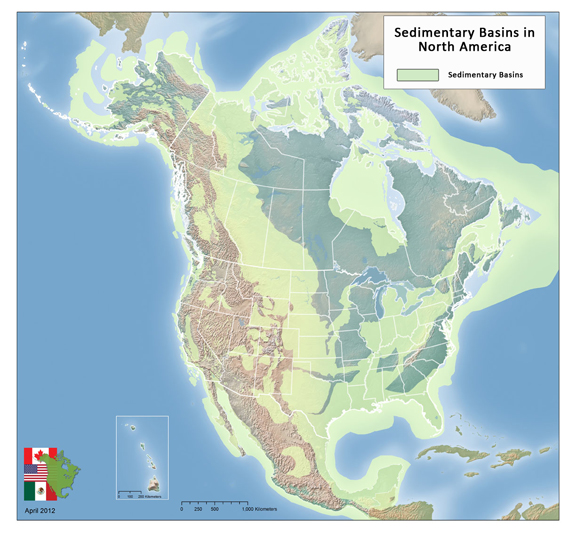Carbon Capture and Storage: Canada’s Technology Demonstration Leadership
Carbon capture and storage (CCS) is a clean energy technology that aims to capture emissions of carbon dioxide (CO2), a greenhouse gas (GHG), before they are released into the atmosphere from fossil-fuelled power plants and industrial facilities. The technology has the potential to help Canada balance the importance of energy to our economy with our need to protect the environment.
CCS can be thought of as a system that integrates three sets of technology: CO2 capture, transport and geologic storage. Currently, CCS is applied mainly to facilities that produce energy and process fuels from coal and natural gas. There are also opportunities to integrate CCS in other CO2-emitting energy production and industrial facilities such as power plants, bitumen upgraders, oil refineries and steel, cement and fertilizer production plants.
Canada is a world leader in CCS and is committed to exploring this technology. The development of CCS is one component of a broad suite of measures that the Government of Canada is pursuing to meet our GHG emission reduction targets.
The global consensus is that multiple CCS demonstration projects are needed, right away, to fully prove the technology and lower its costs before it can be fully commercialized. According to the International Energy Agency (IEA), CCS is the only technology available to mitigate GHG emissions from large-scale fossil fuel use. The IEA suggests that CCS could account for about 20 percent of the global GHG reductions needed by 2050, according to a least-cost scenario to limit the global temperature rise to 2°C.
Canada, with its world-class geological storage potential for CO2, is doing its part to demonstrate CCS technology. The Weyburn project in Saskatchewan – one of the first large-scale efforts in the world – was launched in 2000, followed by the adjacent Midale project in 2005. These projects involve capturing CO2 emissions in North Dakota, transporting the CO2 across the Canada-United States border and delivering it for enhanced oil recovery (EOR) operations. This Weyburn-Midale site also serves as the location for the International Energy Agency Greenhouse Gas Weyburn-Midale CO2 Monitoring and Storage Project. Canada is a founding member of this research initiative. Along with its many private and public sector partners, Canada is contributing to one of the largest international CO2 measuring, monitoring and verification projects in the world.
In addition to their contributions to the International Energy Agency Greenhouse Gas Weyburn-Midale CO2 Monitoring and Storage Project, Canadian governments have committed around $1.8 billion to CCS initiatives over the last few years, which could lead to up to four large-scale demonstration projects in Canada. This funding is provided through several federal and provincial programs, such as the Government of Canada’s Clean Energy Fund and the Government of Alberta’s Carbon Capture and Storage Fund. The governments of Saskatchewan, British Columbia and Nova Scotia have also provided funding.
Canadian governments are also investing in smaller CCS demonstration projects and studies to advance knowledge, particularly in the area of new capture processes, storage site characterization and CO2 monitoring.
Canada is engaged internationally on CCS, through the IEA, the Carbon Sequestration Leadership Forum, and as a founding member of the Global CCS Institute.
Canada is also working with the United States, through the U.S.-Canada Clean Energy Dialogue, to advance technical collaboration on research, development and demonstration, enable further dialogue on CCS policies and practices, and share best practices on CCS communications and public engagement.
Large-scale CCS projects in Canada
Commercial projects (funded by the private sector only)
Cenovus and Apache – Commercial EOR at Weyburn and Midale, in Saskatchewan
Demonstration projects (receiving funding commitments from the federal and/or provincial governments)
SaskPower – Boundary Dam project in Saskatchewan
Shell Canada Energy – Quest project in Alberta
Enhance Energy – Alberta Carbon Trunk Line in Alberta
Spectra Energy – Fort Nelson CCS exploratory project in British Columbia1
Feasibility studies, pilot projects and other supporting projects (receiving funding commitments from the federal and/or provincial governments)
International consortium – IEA GHG Weyburn-Midale CO2 Monitoring and Storage project in Saskatchewan
Petroleum Technology Research Centre – Aquistore Project in Saskatchewan
TransAlta Corporation – Project Pioneer in Alberta
Capital Power Corporation – Integrated Gasification Combined Cycle Front End Engineering and Design study in Alberta
ARC Resources – Heartland Area Redwater project in Alberta
Husky Oil Operations Ltd. – Heavy Oil CO2 EOR and Storage in Saskatchewan
Canada, Mexico and the United States – North American Carbon Storage Atlas Project
(If successful, the feasibility project could lead to a large-scale demonstration project.)

Geological storage potential
Source: North American Carbon Storage Atlas
Based on recent assessments, Canada’s CO2 storage resources are large. The Western Canada region has the largest storage resources. Most pilot and demonstration projects are located in this area.
Text version
Geological storage potential
This map depicts the extent of sedimentary basins in North America. There are three types of sedimentary rocks: (1) clastic (broken fragments derived from pre-existing rocks like sandstone); (2) chemical precipitates (such as carbonates (limestone) and rock salt); and (3) organics (plant or animal constituents that may form coal or limestone). Geological formations being investigated for CO2storage are either clastics or fractured carbonates (both precipitates and organic), where CO2 is stored in the pore spaces between grains or in fractures that are often filled with brine. In this type of CO2 storage system, impermeable layers are required to form a confining zone that prevents the upward migration of CO2.
Download the PDF – (PDF, 1,644 KB)
Page details
- Date modified: